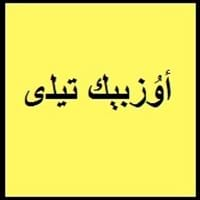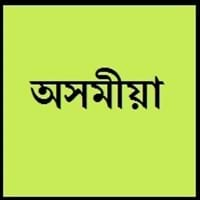Uzbek and Assamese
Countries
Turkey, Uzbekistan
India
National Language
Afganistan, China, Kazakhstan, Kyrgyzstan, Russia, Tajikistan, Turkmenistan, Uzbekistan
Bangladesh, India
Second Language
Not spoken in any of the countries
Not spoken in any of the countries
Speaking Continents
Middle East
Asia
Minority Language
Not spoken in any of the countries
Bangladesh, Bhutan
Regulated By
Not Available
Asam Sahitya Sabha
Interesting Facts
- Uzbek is officially written in the Latin script, but many people still use Cyrillic script.
- In Uzbek language, there are many loanwords from Russian, Arabic and Persian.
- Assamese was reinstated as the state language of Assam in 1873.
- Assamese language has its own stream of origin, it is evolved in a different way from rest of the Indo-Aryan languages of India.
Similar To
Kazakh and Uyghur Languages
Bengali and Oriya
Derived From
Not Available
Sanskrit Language
Alphabets in
Uzbek-Alphabets.jpg#200
Assamese-Alphabets.jpg#200
Scripts
Arabic, Cyrillic, Latin
Bengali
Writing Direction
Not Available
Left-To-Right, Horizontal
Time Taken to Learn
Not Available
Thank You
Rakhmat
ḍhonyobaaḍ
How Are You?
Qalay siz?
aapuni kene aase?
Good Night
Hayirli tun
subhoraattri
Good Evening
Hayirli kech
subha gadhuli
Good Afternoon
Hayirli kun
subha abeli
Good Morning
Hayirli tong
suprobhaat
Please
Iltimos
anugroha kori
Sorry
Kechiring!
moi ḍukkhita
I Love You
Sizni sevaman
moi tomaak bhaalpaao
Excuse Me
Iltimos! Menga qarang
kyoma koribo
Dialect 1
Tashkent
Kamrupi
Where They Speak
Not Available
Western Assam
How Many People Speak
Not Available
Dialect 2
Afghan
Goalpariya
Where They Speak
Not Available
Western Assam
Dialect 3
Ferghana
Bhakatiya
Where They Speak
Not Available
Assam
Native Name
أۇزبېك ﺗﻴﻠی o'zbek tili ўзбек тили (o‘zbek tili)
অসমীয়া (asamīẏa)
Alternative Names
Annamese, Ching, Gin, Jing, Kinh, Viet
Asambe, Asami, Asamiya
French Name
ouszbek
assamais
German Name
Usbekisch
Assamesisch
Pronunciation
Not Available
Not Available
Ethnicity
Uzbek
Assamese people
Origin
9th–12th centuries AD
7th century A.D
Language Family
Turkic Family
Indo-European Family
Subgroup
Turkic
Indo-Iranian
Branch
Southestern(Chagatai)
Indic
Early Forms
Chagatay
Kamarupa
Standard Forms
Uzbek
Assamese
Signed Forms
Not Available
Not Available
Scope
Macrolanguage
Individual
ISO 639 6
Not Available
Not Available
Glottocode
uzbe1247
assa1263
Linguasphere
No data available
59-AAF-w
Language Type
Living
Living
Language Linguistic Typology
Not Available
Subject-Object-Verb
Language Morphological Typology
Not Available
Not Available
All Uzbek and Assamese Dialects
Most languages have dialects where each dialect differ from other dialect with respect to grammar and vocabulary. Here you will get to know all Uzbek and Assamese dialects. Various dialects of Uzbek and Assamese language differ in their pronunciations and words. Dialects of Uzbek are spoken in different Uzbek Speaking Countries whereas Assamese Dialects are spoken in different Assamese speaking countries. Also the number of people speaking Uzbek vs Assamese Dialects varies from few thousands to many millions. Some of the Uzbek dialects include: Tashkent, Afghan. Assamese dialects include: Kamrupi , Goalpariya. Also learn about dialects in South American Languages and North American Languages.
Uzbek and Assamese Speaking population
Uzbek and Assamese speaking population is one of the factors based on which Uzbek and Assamese languages can be compared. The total count of Uzbek and Assamese Speaking population in percentage is also given. The percentage of people speaking Uzbek language is 0.39 % whereas the percentage of people speaking Assamese language is 0.24 %. When we compare the speaking population of any two languages we get to know which of two languages is more popular. Find more details about how many people speak Uzbek and Assamese on Uzbek vs Assamese where you will get native speakers, speaking population in percentage and native names.
Uzbek and Assamese Language Codes
Uzbek and Assamese language codes are used in those applications where using language names are tedious. Uzbek and Assamese Language Codes include all the international language codes, glottocodes and linguasphere.





